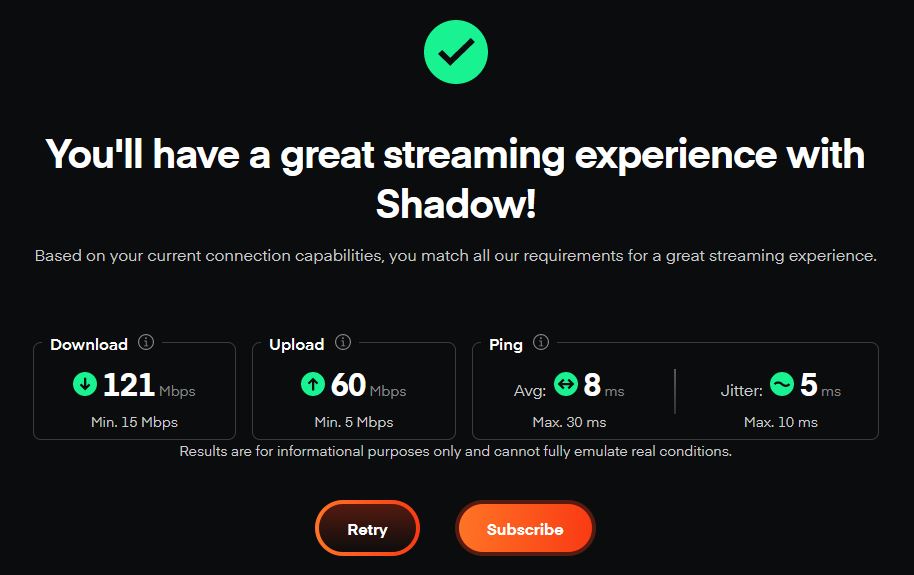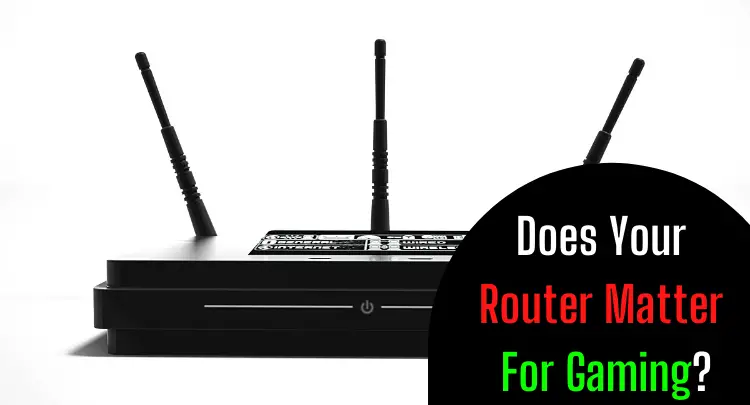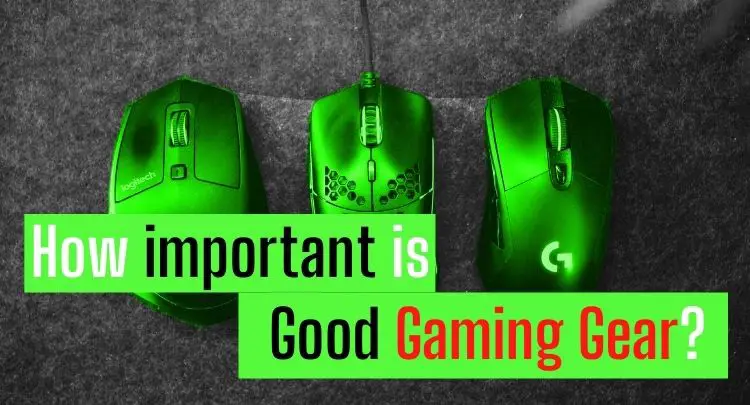As a cloud architect and gamer, I naturally have a considerable interest in cloud gaming. How does it work? What technical components are involved and required? Does it work better or worse than regular gaming?
Let´s start with a basic question and a quick general answer that we will discuss more deeply in a minute.
What is cloud gaming?
According to Wikipedia, cloud gaming refers to streaming games via an internet connection from a remote server in the cloud to the gamer’s device. The prerequisite is an internet connection of at least 25 Mbps. The player can typically interact with a mouse, keyboard, or controller on the local client, computer, console, tablet, or smartphone.
So what is the real advantage of cloud gaming? Let’s start with an overview and slowly drill into the technology to answer this question in detail.
- What Is Cloud Gaming?
- How does Cloud Gaming Work?
- What Are The Minimal Requirements For Cloud Gaming?
- Do I Need a Good WIFI Connection for Cloud Gaming?
- How Much Does Cloud Gaming Cost?
- Do I Need to Buy Games For Cloud Gaming?
- Is Cloud Gaming Safe?
- Is Cloud Gaming Worth it?
- Final Thoughts About How Cloud Gaming Works
- Top-3 Related Posts
Note: This article was written in English. Translations into other languages may not provide the same linguistic quality. We apologize for grammatical and semantic errors.
What Is Cloud Gaming?
Cloud gaming expresses a relatively simple technical principle.
The computing power required for a game, i.e., processor, RAM, hard disks i/o, and graphics card, is provided by servers in the cloud. The user’s device only displays the result of this streamed calculation from the cloud, similar to a web page loaded and displayed in the browser.
There are three different scenarios in which “cloud gaming” plays a role.
Private Cloud Gaming
We are talking about the traditional hosting of a game server, for example, for CSGO. This form of cloud gaming has been around since the millennium turn and is an old hat. You rent a game server from a hoster, configure this server to a certain extent, restrict its use via password and limit its use.
The billing is done annually or monthly, usually with a particular contract period.
This is not the cloud gaming currently covered by all the media.
Public Cloud Gaming
There have been many games where you land on a manufacturer’s game server for quite some time and compete with or against other players. The game runs in a public cloud, e.g., on Amazon Web Services or Microsoft Azure servers.
For example, this is the case with all Battle Royale games or MMORPGs.
The advantage for the manufacturer is that he can ramp up or ramp down servers depending on the number of players to save costs. You benefit from this because server overloads are very rare. The game is always highly available, i.e., available around the clock (except for maintenance windows while applying patches).
With public cloud gaming, you either pay for the game once or monthly or finance this model with in-game purchases such as a battle pass.
Again, this is not the cloud gaming that everyone is currently talking about.
So let’s get to the point 😉
Client Cloud Gaming
Now it’s finally getting exciting. Cloud gaming for the client has not been around that long. Only with stronger internet bandwidths in average households can the vast and continuously flowing data streams of a game be transmitted.
What happens here, roughly?
The game data, especially the graphics, no longer comes from your hardware but from the actual client’s internet, which runs the game for you.
You react to the transmitted images with your mouse, keyboard, or controller, and this data is sent back to the cloud, where it affects the game.
The result is sent back to you almost in real time. The principle is somewhat similar to streaming with a capture card. The stream of a computer is forwarded to another destination, except that your interactions (e.g., controlling a character) are sent back.
Let’s take a deeper dive to see how this works. In the following, we will always use the term “cloud gaming” to refer to “client cloud gaming.”
Honest recommendation: You have the skill, but your mouse doesn't support your aiming perfectly? Never struggle with your mouse grip again. Masakari and most pros rely on the Logitech G Pro X Superlight. See for yourself with this honest review written by Masakari or check out the technical details on Amazon right now. A gaming mouse that fits you makes a significant difference!
How does Cloud Gaming Work?
The following diagram shows all the components of client cloud gaming. Let’s start with you.

1. Player’s Client
Technically, it doesn’t matter so much which device you use anymore. But, of course, there are specific minimum requirements, which we discuss below. In general, though, the main thing is that you can display the streamed image, have internet, and interact with the game somehow, for example, with a mouse and keyboard.
Ready. You can start.
2. Internet Connection
The crux of cloud gaming is the internet connection, and that is in two ways. First, you need large bandwidth to receive the constant stream of data. Second, just as important, if not more so, are stability and latency.
While you don’t necessarily have to act fast in turn-based strategy games, for example, so you could tolerate a delay or even a brief disconnection, it’s a different story in real time games.
Too high latency or even a disconnect is a nogo.
Even 20-30ms can decide about victory or defeat.
So to make it clear again: You need an internet provider who guarantees you a stable and fast line, as well as a bandwidth of at least 25 Mbps.
Where do you get the data from, and where do you send your reactions to it?
3. Client in the Cloud
For games that are not graphics-intensive, you will talk directly to a game server and get the image streamed from there. In that case, a single-player game takes up so few resources that you can handle many players on one server.
But if we are talking about multiplayer shooters or open-world games, where many graphics have to be calculated, then a game server would collapse directly under many players.
In principle, the cloud gaming provider creates a separate client (virtual machine or virtual desktop) for you in the cloud.
This instance usually runs on a server, and you share the server with other instances. Each instance, i.e., each client in the cloud, is allocated fixed resources such as RAM for the game. This way, the provider avoids instances that can take away resources from the underlying server or other running instances.
Because a lot of graphics have to be calculated, these instances are also assigned separated GPUs.
In the meantime, all graphics card manufacturers have developed different technologies for cloud gaming to pass on the full graphics power from the server to the client instances running above it.
However, what sounds simple is the solution to a very complex technical problem because the passing of data – in this case, frames – from the server with GPUs to the client instances and then on to you must not generate any latency.
So this is where the biggest magic that makes cloud gaming possible happens.
When it comes to servers for client instances, the great advantage of cloud computing is again exploited. If many players are playing, new instances (virtual machines) are started up ad-hoc. If fewer players are playing, fewer resources are needed.
What is still missing is the server, where the game manages all the data of the player instances, and the game logic is calculated.
4. Game Server in the Cloud
The core is the game server, where the game, i.e., the application, runs. The server receives the requests and data from the clients or player instances, processes them, and sends the result back.
Nothing new happens here.
The only advantage here is, again, horizontal scaling in the cloud.
For example, suppose suddenly many more players want to connect to the game, which may happen at certain times of the day. In that case, additional game servers are automatically booted up and connected to the game servers already running.
Of course, the game must be programmed and optimized for this framework to work smoothly and in real time. All current games already use this technology, so you, as a player, can connect whenever possible.
Messages like “currently the servers are overloaded, please come back later” should be a thing of the past.
What Are The Minimal Requirements For Cloud Gaming?
The essential requirement is, of course, a sufficient internet connection. Some cloud gaming providers offer a speed test tool so that you can evaluate quite accurately whether your connection is suitable for cloud gaming, for example, here at shadow.tech. Just choose the country you live in or the one closest to you and start the test.
The result will hopefully look like this:

The next trivial requirement is that you need a compatible device. Whether PC, Mac, smartphone, or SmartTV – every cloud expects a few minimum requirements. Here, too, there is usually information on the websites of the cloud gaming providers. For example, you can find overviews for “NVIDIA Now” here.
What else do we need?
The registration is still pending. However, with any cloud gaming provider, you won’t be able to avoid registering to get your account. With this account, you can log in on one or more devices and always access your games and the latest saves.
Some providers let you play for free at first, so you can test it without any cost.
“NVIDIA Now” then limits you to a certain amount of playing time per day. Other providers give you a free month when you register and subscribe to the service.
Do I Need a Good WIFI Connection for Cloud Gaming?
Generally, a good wifi connection is sufficient for cloud gaming, as long as it is stable enough and the bandwidth is high enough. The prerequisite is a wifi connection of at least 25 Mbps.
However, we always have a latency problem with wifi connections in FPS games. Always assuming that the connection is super stable (because real time games with packet loss make no sense at all), then the latency should be as low as possible.
At the end of the article, I link you to another post about gaming routers. With several antennas like, e.g., this router, it is possible to establish a sufficient connection.
However, I personally would always prefer a cable.
FPS Games use UDP as protocol, which means that the data packets are transferred with the principle of “fire and forget”. Only one person needs to stand between your router and your device, and some UDP packets will not arrive, resulting in packet loss and possibly FPS drops.
How Much Does Cloud Gaming Cost?
Cloud gaming is relatively inexpensive in relation to the content you get. Access to hundreds of games per month for a fixed flat rate is no higher than Netflix & Co.
Although there are gradations and upgrade options in detail, all cloud gaming offers are between 5 and 15 dollars. In addition, the providers differ in the featured and content included in the service. Furthermore, there a slight differences within the contract details, such as cancellation periods and technical limitations.
In the following, we have compiled a table of the most popular cloud gaming providers, including the monthly costs (as of 09/2022), to give you a first impression.
|
Costs per Month |
Provider |
Country/Headquarter |
| $8,99 |
USA | |
| $9,99 |
USA | |
| $14,99 |
USA | |
| $14,99 |
USA | |
|
$9,99 |
USA | |
| $29,99 |
USA |
For each pricing model, you should take a close look at the services and cancellation periods. In the best case, you can cancel via a web interface in the following month and also subscribe again at any time.
Flexibility is the key here.
You don’t have to commit to one cloud gaming service.
Do I Need to Buy Games For Cloud Gaming?
In general, all cloud gaming provider offers bundles that include games within their clouds. Purchasing games is usually not necessary.
Of course, there may be extra features for a game that can be booked as an additional option. For example, I could imagine that new games could cost an additional monthly price in the first period. Currently, however, all cloud gaming providers seem to practice the Netflix model at a flat rate.
Is Cloud Gaming Safe?
That depends very much on the provider. The largest providers cannot afford any security gaps or data leaks. Especially with such a young technology, a scandal would be fatal.
Cloud computing has been around for 20 years now, and several incidents have shaped and developed the industry. Data centers are better protected. The hardware is virtually unbreakable with 99.9999…% resilience.
On the other hand, cloud gaming runs entirely over the internet. This means that communication is only secure if the encryption holds. As is known, all secret services of the more important countries of this world can crack the encryption. So sooner or later, your data can end up somewhere.
Whether this can have any negative consequences for you, you must answer for yourself.
Another weak point is the connection to the provider. When you start the game, you have to log in to the provider. Here it depends on the security of your end device.
Suppose you do not have any malware on your device, the virus scanner is up to date, and you secure your login with multi-factor authentication, you will get the most secure conditions possible.
You usually deposit your data (e.g., address) with the cloud gaming provider for billing purposes. This data is hopefully sufficiently protected by the provider.
To play a game, no personal data is usually necessary, so there is no danger at this point.
Overall, as a cloud architect, I can state: Cloud gaming, with the features mentioned above activated, is secure 🙂

Is Cloud Gaming Worth it?
Whether cloud gaming is worthwhile for you depends on your current hardware, which games you like to play, and whether your internet connection allows cloud gaming at all.
If we assume that you have enough stable bandwidth, you haven’t just bought a gaming computer for several thousand dollars, and you’re not playing in the competitive area, where every millisecond counts, then cloud gaming has these advantages:
Take care only of the display, sound, and input devices
With Cloud Gaming, you step entirely out of the hardware race of past decades. So if you want to play the latest game smash hit – such as Cyperpunk 2077, Super People, or a new Call of Duty. then get into the cloud and start playing. Your computer or device doesn’t matter anymore, as long as you meet the minimum requirements.
Get a decent monitor, plug in the peripherals you want, such as controllers, VR goggles, headset, or keyboard and mouse, and you’re ready to go!
No Juggling on the hard drive
With almost all cloud gaming providers, you can access a massive collection of games. So even if you try multiple new games throughout the week, you won’t use one megabyte more than usual on your computer’s hard drive.
Gone is the headache of getting a new game on the disk, even though you don’t want to uninstall the others for nostalgia.
Monthly games flat rate
What has been standard for a few years now as a substitute for movies and TV, namely having access to hundreds of films and series for a monthly flat rate that you can stream for days at a stretch without any problems, is now arriving in the gaming world.
Pay once a month and be able to use everything. That’s a lucrative model for both sides.
Reliability due to less complexity
Many components could fail in your device at any time. Graphics card, RAM, hard drive, etc. With cloud gaming, only one thing can happen to you: You have to buy a new mouse or controller if you have thrown the poor devices against the wall during a rage 😉
Seriously, the probability that your computer will crash while cloud gaming tends to be zero.
Essentially, only your network card is brought to glow. All other computer components are not stressed too much, positively affecting the lifespan and susceptibility to errors.
So you kill two birds with one stone. On the one hand, a hardware failure can no longer ruin your evening, and on the other hand, your game data, i.e., game saves and game configurations, are safely stored in the cloud.
Mobility – play on almost all devices
Another advantage of cloud gaming is device-independent mobility. You can play on your PC at your desk at home, comfortably play on your tablet on the couch in the evening, and stream a quick round of Tetris on your smartphone in bed. Everywhere you have the same game state and configuration with your account.
The most beautiful at the end: Reduced cheating
Cloud gaming also means that you cannot manipulate the client.
What sounds like a paradise for fair gamers at first is somewhat limited by the fact that most game titles are not only available via cloud gaming. In most cases, you won’t get rid of all cheaters with cloud gaming, but at least the attack surface has been reduced.
Play a game that is exclusively playable via cloud gaming, and there shouldn’t be any cheaters anymore, in theory.
In practice, you’ll probably still have to live with a few cheater-kids. For example, weapon recoil could still be intercepted by mouse scripts.
However, direct game manipulation (wallhack, aimbot, radar hacks, etc.) is out of the question because you always get the already calculated image streamed.
A real blessing.
Final Thoughts About How Cloud Gaming Works
Cloud gaming follows a trend that has emerged across the entire IT industry in the last 15 years and is now mainstream. Resources are outsourced to concentrate on the essentials – in our case: gaming.
Not having to worry about hardware anymore is a real step forward. But, of course, many gamers like to tinker with their computers, and they are free to do so.
The casual gamer and the hardcore gamer who wants to play will be happy about cloud gaming.
Besides the reduced complexity, there is nothing wrong with the technology, as long as your internet connection is stable, fast, and sufficiently dimensioned. Unfortunately, in FPS games, where latency is critical, gamers will have to wait for better technical features.
There are no real drawbacks in all other genres.
We can only recommend you try this new way of gaming. It may save you a lot of time and nerves.
Suppose you’re thinking about buying a new monitor for casual cloud gaming, and you’re flirting with a curved monitor. In that case, you’ll probably be interested in our article “Curved Gaming Monitors | Good for Gaming, Worth it, Cons & More”.
If you have a question about the post or pro gaming in general, write to us: contact@raiseyourskillz.com.
GL & HF! Flashback out.

Michael "Flashback" Mamerow has been playing video games for over 35 years and has built and led two Esports organizations. As an IT architect and casual gamer, he is dedicated to technical topics.




